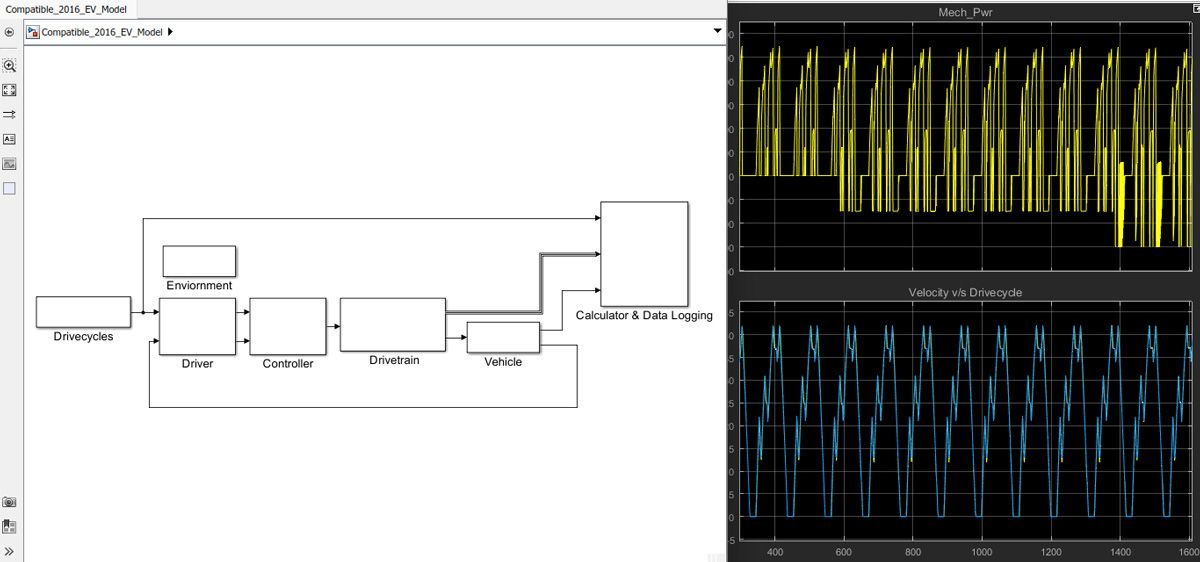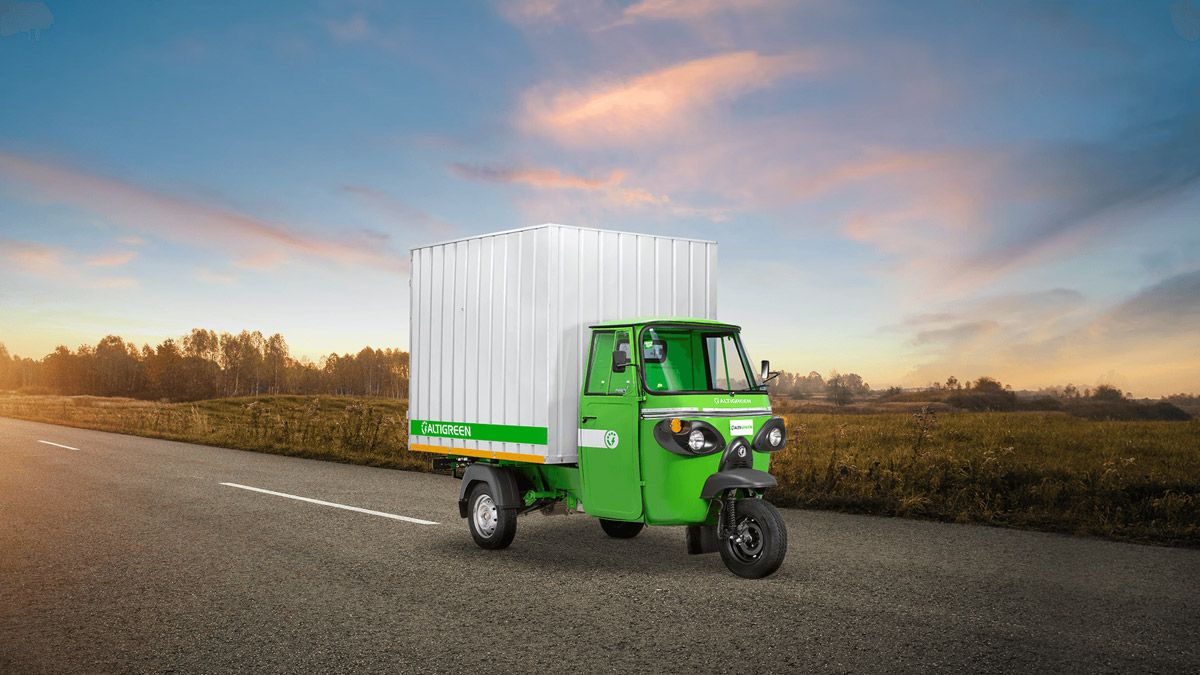Clean Technologies Power Electric Three-Wheelers
Last-Mile Delivery EVs Made in India, for India
Three-wheelers are ubiquitous in India and are used to transport passengers, cargo, and parcels. With over 6 million three-wheelers on the road today, these nimble vehicles are ideal for the road conditions they encounter. But most are petrol- (gasoline) or diesel-powered, greatly contributing to air pollution in congested urban areas. Others use natural gas (NG) or liquefied petroleum gas (LPG), which, in addition to polluting the air, are rather noisy. One company, Altigreen Propulsion Labs, is focused on providing a green alternative that reduces both air and noise pollution. It is rolling out electric three-wheelers (3Ws) for last-mile deliveries across India.
The first electric vehicle (EV) Altigreen created, a three-wheeler called the NEEV, started making deliveries in 2021. NEEV is Sanskrit for “foundation,” and the three-wheelers are named as such since these vehicles are the foundation of the drivers’/owners’ livelihood. Altigreen describes its EVs as “Made in India, Made for India.” With the government subsidies for EVs and the “Make in India” initiative, the market for domestic EVs greatly expanded and the NEEV quickly gained popularity. As tail winds of e-commerce began penetrating India, Altigreen started selling them to fleet companies that provide transportation services for companies such as Amazon and Flipkart. Now, Altigreen increasingly sells them directly to owner-operators and small companies for captive use as well.
The NEEV charges in under four hours using a standard household plug (220V/16A) available throughout India. Its performance matches and surpasses fossil fuel–powered three-wheelers in terms of torque, power, and volumetric load. With a certified range of 151 kilometers (93 miles), it powers through a full day’s work, handling potholes, puddles, and hills with ease.
The Altigreen Low Deck three-wheeler electric cargo vehicle is nimble enough to handle urban roads and rugged enough to handle potholes, puddles, and hills. (Video credit: Altigreen Propulsion Labs)
Indigenous System Development
Altigreen initially focused on designing retrofit kits to convert ICE vehicles into hybrid/electric, using its patented motor generator and power electronics/controller hardware. The team then used MATLAB and Simulink Suite for Startups to develop various control systems for their drivetrain kits—for two-, three-, and four-wheelers. However, relying on other incumbents to use their EV drivetrains or retrofitting ICE vehicles themselves was not accelerating the move toward electrified transport options. Hence, Altigreen shifted its focus to becoming an OEM, choosing to start with developing electric three-wheelers from scratch, largely because 400 million Indians access 3Ws for cargo and passenger mobility every single day.
“System-level design and simulation in Simulink allow for faster development. It gives our teams the ability to test concepts in simulation and easily iterate on design improvements and new capabilities.”
Having worked with EV drivetrains and other OEMs, the team had a clear understanding of the India-specific challenges and use cases related to last-mile mobility. They could use this know-how to derive the system requirements. Based on these requirements, the Altigreen team built a system-level simulation model of the vehicle, used it to test how different components work together, and validated designs earlier in the development cycle.
“System-level design and simulation in Simulink allow for faster development,” says Amitabh Saran, Altigreen Founder and CEO. “It gives our teams the ability to test concepts in simulation and easily iterate on design improvements and new capabilities.”
Altigreen determined that it would not be able to use off-the-shelf, commercially available components such as batteries, motors, and controllers since they did not meet the specifications for the NEEV. The team chose to develop all these components in-house.
The process of building system-level simulation models for electric powertrains expedited the development cycle, allowing real-world functionality testing. This method enabled designers to quickly test various scenarios using different inputs, leading to faster design improvements. By utilizing simulations, the design process became an iterative process, where real-world test data was put back into the simulation models, and the outputs were analyzed. Overall, this approach reduced the development cycle while providing a more comprehensive understanding of the design’s functionality.
Designing a new drivetrain from scratch can take two years, but as the Altigreen team gains experience and validates their technology in existing vehicles, development becomes easier and faster. “Our last drivetrain redesign was complete in under 13 months,” says Prathamesh Patki, principal engineer and controls systems head at Altigreen.
In-House Battery Management System
Altigreen assembles its own Li-ion batteries. The company designs and manufactures the battery management system (BMS) as well. Instead of compromising with smaller batteries from other companies, the Altigreen team designed a single pack that’s perfectly sized for their use case. In-house design helps tighten the development cycle. “The turnaround time for understanding and correcting mistakes becomes much faster with in-house design since nothing is hidden,” Patki says. “In-house design improves the overall system efficiency as well since everything is the optimal size and works with the other systems in the vehicle.”
“The turnaround time for understanding and correcting mistakes becomes much faster with in-house design since nothing is hidden.”
The BMS monitors the battery’s health, balances charge between cells, tracks temperature, and estimates the overall state of charge (SOC). It also calculates the allowed charge and discharge rates. Altigreen adopted Model-Based Design for its BMS and created the main functions, such as the SOC estimation.
To estimate the SOC of the battery, the BMS uses equivalent models of battery cells, the measured cell voltages, and the amount of current going in and coming out of them. Using a simulation-based approach helped the team to model and iteratively try different techniques such as Coulomb counting and extended Kalman filtering and design a comprehensive one for their SOC estimations.
From Handwritten Code to Automatically Generated Code
Patki says that before Altigreen, he was a “hardcore, low-level embedded C-coder working in aerospace.” Moving from C to Simulink® was not a drastic shift. When working in C, he drew control flow diagrams for the control units indicating how the various functions and feedback loops would fit together. He would then manually code them. Now, he creates a model in Simulink and tests it by simulating it with multiple inputs. When the control algorithms are finalized, Embedded Coder® outputs code for the processors in the vehicle.
“Embedded Coder has cut development time in half. Whatever we conceptualize, we can get it running in the shortest amount of time on the real hardware.”
“Design is a very critical step before going to coding,” Patki says. “The data flow and control flow diagrams are always part of the software that I develop. Using Simulink, these design considerations came up right away.”
The biggest difference is the speed at which the design becomes working code. “Embedded Coder has cut development time in half,” says Patki. “Whatever we conceptualize, we can get it running in the shortest amount of time on the real hardware.”
The system is highly complex, in part because of all the feedback loops. The design process is agile-based, with iterative development and shorter release cycles. “Rapid iteration between modeling and building helps,” he says. “This back-and-forth enhances our understanding.”
The team carefully analyzed the real-time execution needs, code footprints, and other parameters related to code execution and decided to combine their vehicle controller (VCU) and the motor control algorithm (MCU) into a single electronic control unit (ECU). Presently, a single ECU based on TI C2000™ is being used for both ECUs. Similarly, they have combined the telematics unit and display control unit into another ECU.
Solving Integration Challenges
Designing both the software and hardware provides another advantage. “Integrating software, electronics, and mechanical systems may cause different behaviors, such as resonances or torsional vibrations,” Patki says. “There have been a lot of surprises, but we have been able to find solutions.”
Model-Based Design enables Altigreen to keep its R&D team small.
For example, the drivetrain mounting causes low-frequency vibrations. Instead of adjusting the hardware to dampen the oscillations, the team found that they could just use MATLAB® to add a bandstop filter in the control software. They’ve similarly handled electronic emissions, which are radio waves generated by certain components that can interfere with other components. Software fixes are easier than hardware fixes.
Model-Based Design enables Altigreen to keep its R&D team small. That’s especially important because finding talented people with the required know-how is not easy. “And then it takes six months to get a highly qualified new hire up to speed on all our systems,” Patki says, “because we’re building every part of the package—drivetrain, batteries, telematics.” Presently, within the larger drivetrain and controls team, Altigreen has around 16 people working on designing the core vehicle control systems.
Robust Design and Low Costs Contribute to the NEEV’s Popularity
Altigreen builds robust electric three-wheelers, combining its deep understanding of its customers with its knowledge of the conditions under which the vehicles operate. Altigreen was able to pivot its business to leverage the support provided by the government, thus reducing the operating cost to the customer. A proactive approach to investing in simulation-driven design and clean technologies such as electric powertrains helped the company reduce emissions and noise. Altigreen has its dealer partners and retail experience centers spread across India (metros, as well as Tier 1 and Tier 2 towns), which has also helped it develop NEEV as a popular choice for last-mile mobility in India.
You will see more variants of Altigreen vehicles on the road soon. The company is expanding to five new models, including a passenger vehicle, and is gearing up for their launch across India. Recently, Altigreen also signed a deal with Exponent Energy to use batteries that can charge in only 15 minutes at special pumps, making it even easier for India to go green.
Read Other Stories
GREEN TECHNOLOGY
Smart, Green Technology Is Changing the Way India Rides
Electric Scooter Reduces CO2 Emissions and Cures “Range Anxiety”
GREEN TECHNOLOGY
From Virtual Vehicle to All-Electric Off-Road UTV in Less Than a Year
Going Green with an All-Electric Utility Task Vehicle

